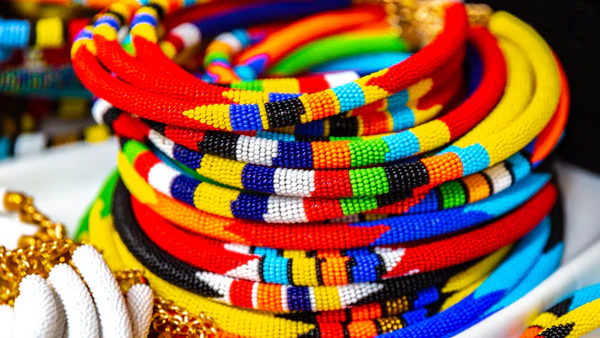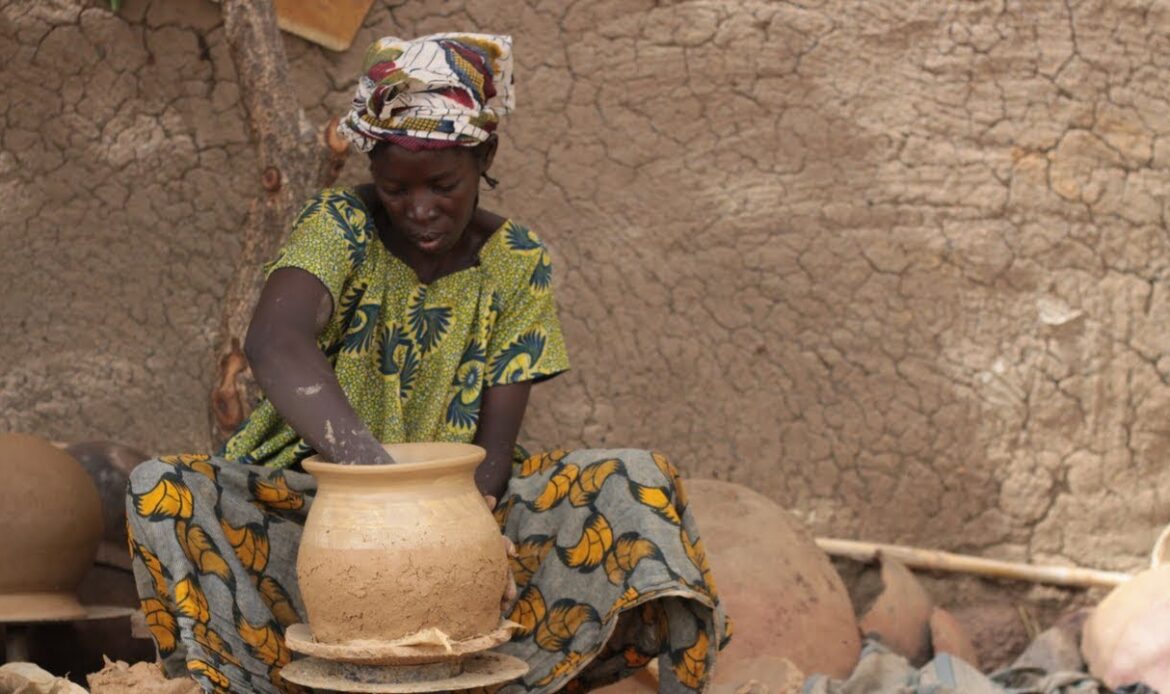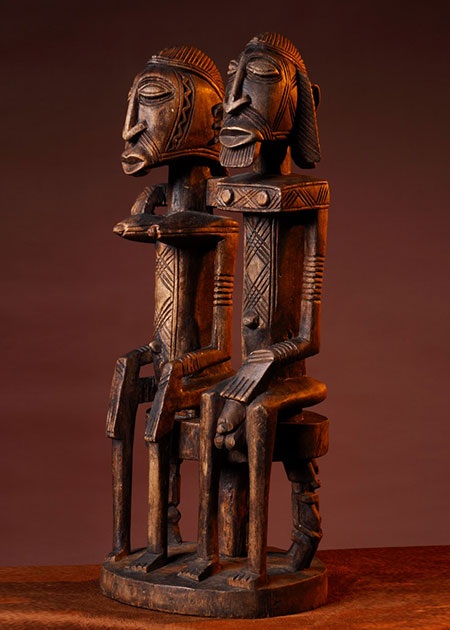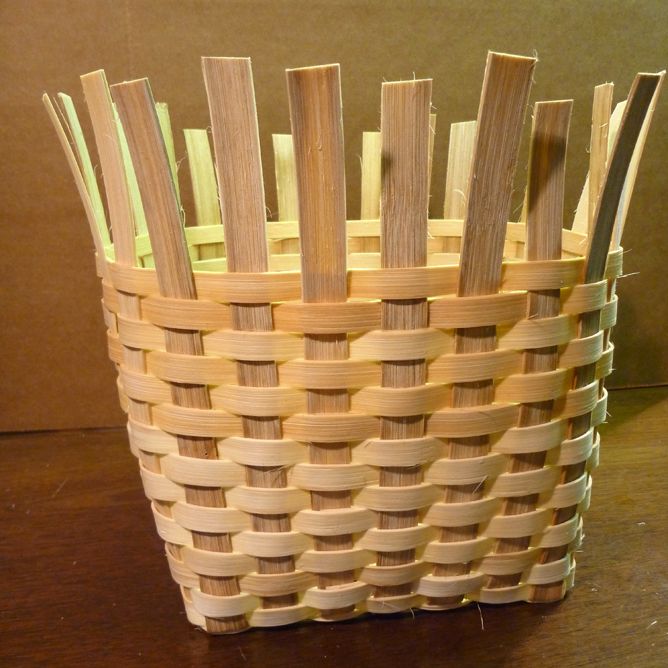
Africa is the birthplace of humanity and has a rich heritage of traditional crafts. African crafts reflect centuries of artistic expression, cultural identity, and craftsmanship. The Maasai in East Africa are known for their intricate beadwork, while the Ashanti in West Africa are famous for their vibrant textiles. Each region of the continent offers a unique glimpse into its artistic traditions.
Let’s go on a journey through the colorful world of traditional African crafts, celebrating the creativity and skill of artisans across the continent.
1. Beadwork

Beadwork is important in many African cultures. It is used for decoration, communication, and storytelling. In countries like Kenya, South Africa, and Nigeria, people make beads into detailed patterns using traditional methods passed down through generations.
Beadwork in Africa includes necklaces, bracelets, ceremonial clothing, and decorative items. It represents the beauty and cultural importance of African craftsmanship.
Read: 10 African Proverbs, Their Origin, and Meaning
2. Textiles

African culture values textiles. Each region has its own weaving, dyeing, and embroidery traditions. The Ashanti people in West Africa are known for their colorful kente cloth with intricate geometric patterns. In East Africa, the Swahili coast is famous for its detailed embroidered kanga and kitenge fabrics.
These fabrics are used as clothing and decoration in homes and ceremonial spaces. African textiles, made from cotton, silk, or bark cloth, showcase the skill and creativity of the continent’s artisans.
3. Pottery

African pottery has been a significant part of African art for many years. Different regions use various techniques to create pottery. In Nigeria and Ghana, traditional pottery is often handmade using coiling or slab techniques, and it can be used as a cooking pot or for decorative purposes.
In North Africa, the Berber people are known for their unique pottery, which includes intricate geometric patterns and bright colors inspired by the desert. African pottery, whether fired in open pits or kilns, reflects the cultural and environmental influences of the people who make it.
4. Woodcarving

Wood carving is an ancient craft practiced across Africa. Artisans sculpt ceremonial masks, sculptures, stools, and utensils. The Yoruba and Bamileke peoples in Nigeria and Cameroon are known for intricate wooden carvings depicting mythological figures, animals, and symbols of status and power. In East Africa, the Makonde people of Tanzania are celebrated for their detailed ebony carvings, often depicting scenes from daily life and folklore.
Read: 10 Interesting Things We Know About the Igbo Tribe
5. Basketry

Basket weaving is a common craft in Africa. Artisans use natural materials like grasses, reeds, and palm fronds to weave various baskets and containers. The San and Lozi peoples in Botswana and Zambia are known for their beautifully woven baskets, which are functional for storing food and goods and are regarded as works of art. Each community has unique basket weaving techniques, incorporating distinct patterns, colors, and symbolism into their creations.
Traditional African crafts are a rich tapestry of artistic expression, cultural heritage, and craftsmanship. They include beadwork, textiles, pottery, woodcarving, and basketry. These crafts connect us to Africa’s past and inspire innovation and creativity today. Let’s celebrate the diversity and beauty of traditional African crafts and recognize the skill, dedication, and cultural significance of the artisans who preserve these ancient traditions.
